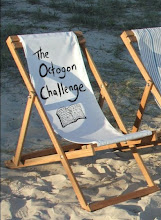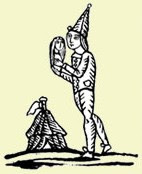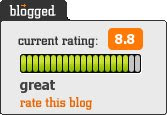
It is the middle of March (already, I know), and time for this months summary of the Literary Theory book that I found earlier in the year, and challenged myself to read and blog about it. Following on from last months summary about the rise in consumerism during 1895 - 1920, and its influence on writing at the time, I am covering another 2 chapters today.
Chapter 2 - Labour
With the rise in consumerist tendancies there had to be a work force producing the items fantasised about and desired by the buying public. Hand in hand with production lines was the need for electoral reform addressing injustices in the conditions of the working classes. Socialist fiction found a voice during this time. Political representation for working people came to the fore in fiction, as a huge advance in trade union membership took place during the period. The 2 main political parties of the day spent a lot of effort courting the working class vote. Socialism was on the rise with many organisations springing up to fight the workers cause, and although their memberships were not huge, their rallies, pamphlets and journals prompted new thought and consideration.
Writers were now promoting anti-bourgeois theories using the literary field which was mainly regarded as bourgeois. The working classes had little or no time for the leisurely pursuit of reading, that is if they could read at all.
Did the largely middle-class writers have the resources to represent accurately the working classes? Many writers chose to get around this by not highlighting the work so much as the anxieties that came with casual and unstable employment. This is famously addressed in Robert Tressle's novel The Ragged Trousered Philanthropists.
Authors needed to recognise the anxiety in the working classes caused by the conflict between earning and working to provide, and desiring the things advertised in shop windows and the media, and how this affected identity.
In contrast, working class writers, who had gained an education and moved up the social scale, tended to use their writing to justify their social mobility, concentrating on 'voyages of self-discovery', or the Bildungsroman (novel of development). This category of writing is typified by Thomas Hardy's Jude the Obscure, where Jude longs for the University Spires and the aspirations of learning to take him from the labours of being a journeyman Mason. Freedom through knowledge was a widespread ambition. Hardy also uses descriptions of the workers and the toll that this has on their bodies and physical appearance in The Woodlanders. Work affects identity, 'To live and work is to deteriorate, until you are your deteriorations.' (p35). Likewise, Arabella in Jude is entirely defined by her work.
During the late 19th century there was an increase in the number of working middle-class women. This was not only a means of survival, but also identity, 'paid public work would give them dignity and independence' (Vicinus 1985, p.6), p39. New opportunities included journalism and literature. This lead the way for female pioneers such as the Suffragettes and the Land Girls.
The First World War managed to dilute any bitterness regarding politically active women because they had to take on a wide variety of jobs while the men were fighting, proving their ability beyond the home. There are many novels that take on the subject of womens work during this period.
By the end of the war, writing was exploring individual consciousness instead of work and community, now explored using stream-of-consciousness techniques.
Chapter 3 - Gold Standards
During this historical period the English Sovereign had a talismanic symbolism equating to solidity, being made of solid gold. Solidity was seen as a virtue, the English hero being its embodiment. Descriptions of 'solid', or 'mint' as a compliment were rooted in the reputation of the British Sovereign being the same. The shilling however is seen as a mere 'token' and the banknote as completely unreliable.
Imaginary money, bank notes, cheques, exchange bills etc., although used more and more, were eyed with suspicion. The gold standard was 'a defence against irresponsible expansions of credit' (p51). This monetary hierarchy was used to describe reliability and this imagery was widely used in writing. 'Mint' equalled quality and everything that was perceived of in the English Gentleman. Hallmarks guarantee origin and purity. When Tarzan meets Jane, he kisses her hand and betrays the 'hallmark' of good breeding, despite living years in the jungle.
Likewise, the same imagery is used when exposing a fake and dubious character, 'He looked as genuine as a new sovereign, but there was some infernal alloy in his metal', from Lord Jim by Joseph Conrad.
Contemporary works that illustrate the above points include...
Workers in the Dawn by George Gissing
The Ragged Trousered Philanthropists by Robert Tressle
A City Girl by Margaret Harkness
Jude the Obscure by Thomas Hardy
The Woodlanders by Thomas Hardy
Mrs Dalloway by Virginia Woolf
The 39 Steps by John Buchan
Lord Jim by Joseph Conrad
Look out for the next installment from this Literary Theory book, exploring the age of Modernism and its influence on writing, in April.
























4 comments:
Looking at your list of books from the period, I realised just how many of these writers I actually find very difficult to read. The only ones that I could honestly say I've enjoyed are the Woolf and the Tressle. (Hardy and Conrad have to be amongst my least favourite writers of all time.) And yet I'm not quite sure why this is. I shall have to go away and think about it for a bit.
I know what you mean, Conrad is quite difficult and not everyone gets on with Hardy. I also struggle with Virginia Woolf even though I admire her writing. Never read Tressle (its huge) but have seen 2 versions of the play based on the book. Interesting reading about the period though.
I actually read the Tressle when my then partner was thinking about adapting it for the stage. I wonder what it is about the book that means that more people seem to know it in a dramatised version than the original prose form?
I don't know if it is the sheer size, and maybe the political content, being easier to digest in a 2 hour play.
Post a Comment